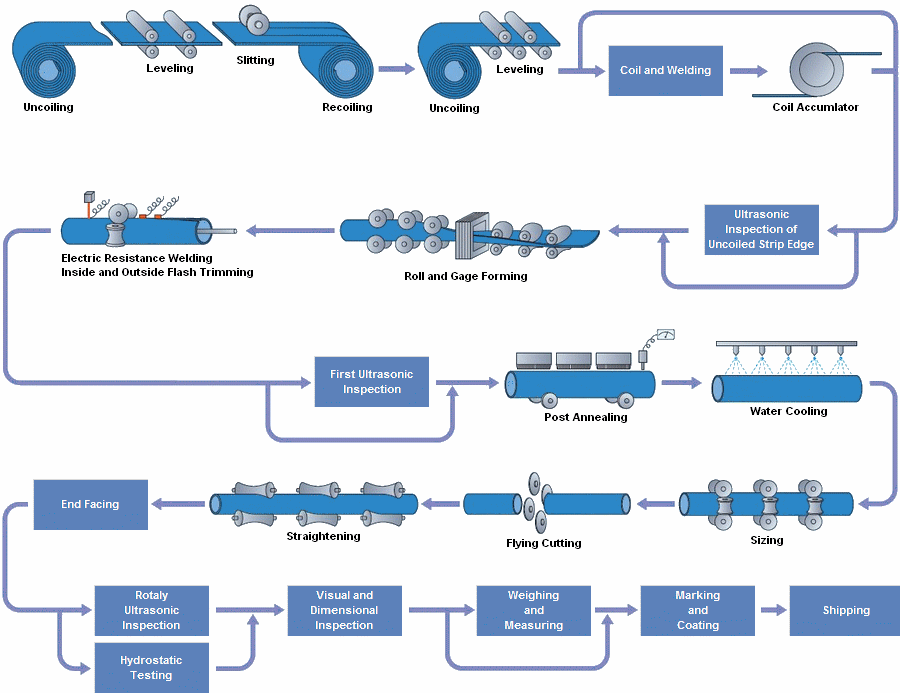Electric Resistance Welded (ERW) steel pipe is produced by forming hot-rolled coils through a forming machine. The edges of the tube blank are heated and melted using the skin effect and proximity effect of high-frequency currents. These edges are then welded together under the pressure of squeeze rollers to complete the pipe production. Currently, ERW pipes account for approximately 80% of the global welded steel pipe production.
ERW pipes are available in sizes ranging from 1/2 inch to 24 inches and are commonly made from carbon steel (with ASTM A53 being the most widely used specification) and stainless steel (ASTM A312). Key size standards include ASME B36.10 and ASME B36.19, while API 5L is the main reference for welding ERW pipelines.
In recent years, advancements in modern welding technologies, such as High-Frequency Induction (HFI) and High-Frequency Welding (HFW), have made ERW pipes an attractive and cost-effective alternative to seamless pipes. These technological improvements have minimized the performance gap between ERW and seamless pipes, making them interchangeable in certain applications involving medium/low pressure and medium temperatures. Nevertheless, seamless steel pipes retain their advantage in terms of mechanical strength due to the inherent superiority of billets compared to coils and plates.
ERW Steel Pipe Manufacturing Process:
ERW pipes are manufactured from steel coils, which are uncoiled, cut, shaped, welded, and tested in a series of steps to ensure quality and reliability.




 English
English Español
Español Français
Français بالعربية
بالعربية






















